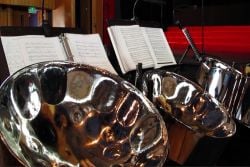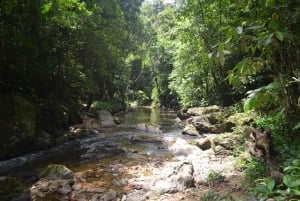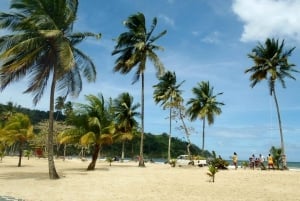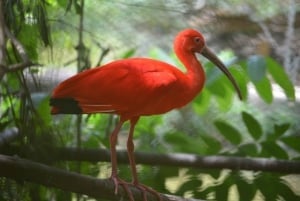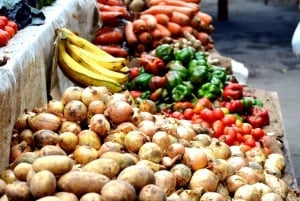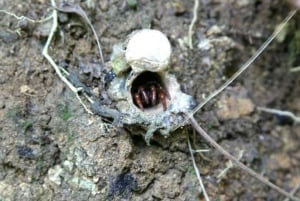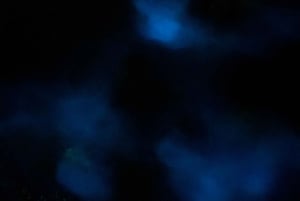National Emblems
The National Flag was designed by the Independence Committee and selected to be used as the National Flag in 1962. Its colours are Red, White and Black.
Red is the colour most expressive of our country. It represents the vitality of the land and its people; it is the warmth and energy of the sun, the courage and friendliness of the people.
White is the sea by which these lands are bound: the cradle of our heritage; the purity of our aspirations and the equality of all men and women under the sun.
The Black represents for us the dedication of the people joined together by one strong bond. It is the colour of strength, of unity, of purpose and of the wealth of the land.
The colours chosen represent the elements Earth, Water and Fire which encompass all our past, present and future and inspire us as one united, vital, free and dedicated people.
The Coat of Arms of Trinidad and Tobago was designed by a committee formed in 1962 to select the symbols that would be representative of the people of Trinidad and Tobago. The committee included noted artist Carlyle Chang and designer George Bailey.
The birds represented on the Coat of Arms are the Scarlet Ibis, the Cocrico (native to Tobago) and the Hummingbird. The three ships represent the Trinity as well as the three ships of Columbus. The three peaks were principal motifs of Trinidad's early British colonial seals and flag-badges. They commemorated both Columbus' decision to name Trinidad after the Blessed Trinity and the three peaks of the southern mountain range, called the "Three Sisters".The fruited coconut palm dates back to the great seals of British colonial Tobago in the days when the island was a separate administrative unit.
The steelpan was invented in Trinidad and Tobago and is widely regarded as the only major musical instrument to be invented in the 20th century. It is a definite pitch percussion instrument in the idiophone class, traditionally made from a steel drum or steel container. The metallic playing surface is concave with a skirt attached. The playing surface is divided into convex sections by channels, groves and/or bores. Each convex section is played by striking the pan with sticks to produce musical notes.
Together We Aspire, Together We Achieve
Discipline, Production, Tolerance
The Scarlet Ibis (Tantalus Ruber) is found in the Caroni Swamp, Central Trinidad. This beautiful bird is brown when young and its colour changes to red when it is mature.
The Cocrico (Rufus Tailed Guan) is a native of Tobago and Venezuela but is not found in Trinidad. It is the only game bird on the island and is referred to as the Tobago Pheasant. It is about the size of a common fowl, brownish in colour with a long tail. They go about in flocks of about six and their quaint calls can be heard in the early morning and late evenings.
Both the Scarlet Ibis and Cocrico are represented on the Coat Of Arms of Trinidad and Tobago.
The national flower, the Chaconia, called "Wild Poinsettia" or "Pride of Trinidad and Tobago", is a flaming red forest flower of the family Rubianceae. The flower was named for the last Spanish Governor of Trinidad and Tobago, Don Jose Maria Chacon. This flower, which is known by its long sprays of magnificent vermillion, is in bloom on every anniversary of our Independence. As an indigenous flower it has been witness to our entire history. It can therefore be said to represent the imperishability of life and the continuity of our Nation.
With its colour matching the flaming red of our Flag and Coat of Arms and bearing the same symbolism, the Chaconia harmonizes with the other national emblems.


